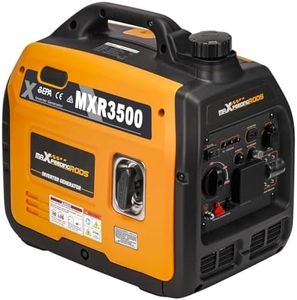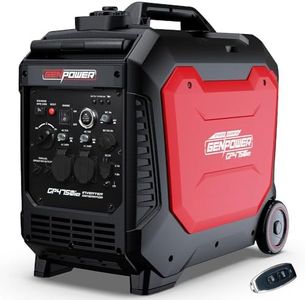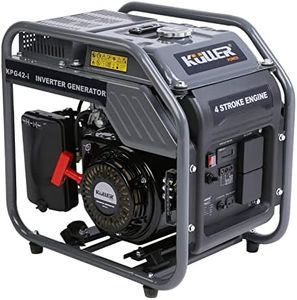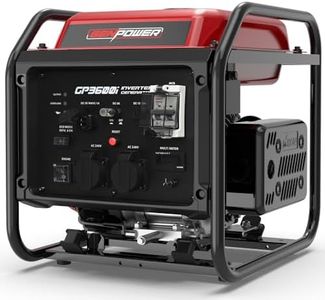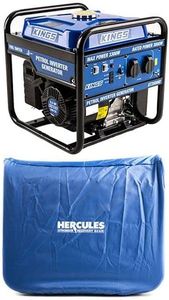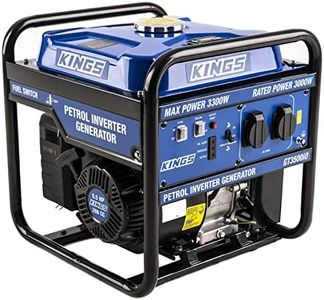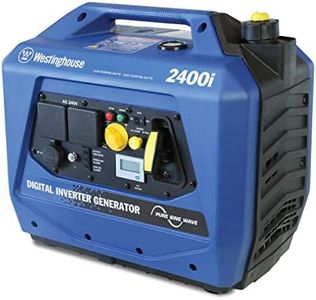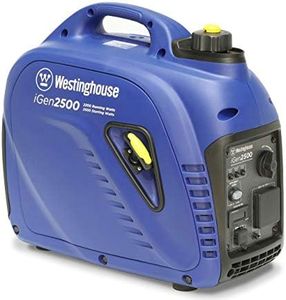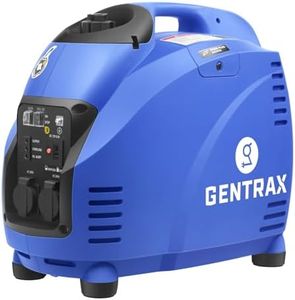We Use CookiesWe use cookies to enhance the security, performance,
functionality and for analytical and promotional activities. By continuing to browse this site you
are agreeing to our privacy policy
10 Best Inverter Generators
From leading brands and best sellers available on the web.By clicking on a link to a third party's website, log data is shared with that third party.
Buying Guide for the Best Inverter Generators
When choosing an inverter generator, your goal is to find a reliable source of portable power that matches your needs—whether for camping, backup at home, or powering sensitive electronics. Inverter generators stand out because they deliver cleaner and more stable electricity compared to conventional generators. It's essential to look not just at the power, but also factors like noise, fuel efficiency, and portability, as each will impact your experience. To make a smart choice, you should understand both your power requirements and how you'll use the generator most often.Rated Power Output (Wattage)The rated power output tells you how much electricity the inverter generator can supply continuously. This is crucial since you want enough power for all the devices you plan to use at the same time. Small units (under 2000 watts) are good for charging electronics or running small appliances, medium sizes (2000–3500 watts) can handle larger items like refrigerators or multiple tools, while large ones (above 3500 watts) may run an entire RV or serve for bigger home backup needs. To pick the right wattage, list out what you want to run simultaneously and add up their wattage requirements—then look for a generator with at least that continuous output.
Portability (Weight and Size)Portability reflects how easy it is to move or transport your inverter generator. Lightweight and compact models are suitable if you plan to move the generator often, like for camping or tailgating; they typically weigh 40 pounds or less. Moderately portable units (40–80 pounds) balance more power with manageable size and may have handles or wheels. Heavier ones, while harder to move, give you more capability but are better suited for semi-permanent setups. Consider where and how often you’ll transport your generator to decide what’s manageable for you.
Noise LevelThe noise level is how much sound the generator makes when running, usually measured in decibels (dB). Quieter generators (under 55 dB) are best for campgrounds, neighborhoods, and situations where noise matters; moderate noise (55–65 dB) is typical for mid-sized models, while louder units (over 65 dB) may be less suitable for quiet settings. Think about where you'll use the generator and who could be affected by noise—choose quieter options if you’re around other people or in peaceful areas.
Fuel Efficiency and RuntimeFuel efficiency determines how long the generator runs on a given amount of fuel, typically measured at a specific load (like 25% or 50%). Longer runtime on less fuel means less hassle and cost to you. Efficient generators can operate for 8–12 hours or more on a single tank, while less efficient ones may need refueling sooner. If you need power all night or during long outages, look for models advertising extended runtimes on a full tank.
Clean Power (THD - Total Harmonic Distortion)Clean power in inverter generators refers to producing electricity with minimal distortion (low THD), making it safe for sensitive electronics like laptops, phones, and medical devices. Models with THD below 3% are preferred for these uses. If you plan to plug in gadgets or delicate equipment, prioritize a generator known for stable, clean power output.
Parallel CapabilityParallel capability means you can connect two compatible inverter generators for extra power. This is handy if you start with a smaller unit and later find you need more capacity—without buying a whole new, larger generator. If you anticipate growing your power needs or want added flexibility, look for this feature so you can scale up easily.
Outlets and ConnectivityOutlets determine what types of devices you can power directly from the generator. Common options include standard household outlets, USB ports, and larger RV or twist-lock outlets. Some generators also have displays showing output or maintenance info. Think about what you will actually plug in—make sure the generator has the right types and quantities of outlets for your needs.
